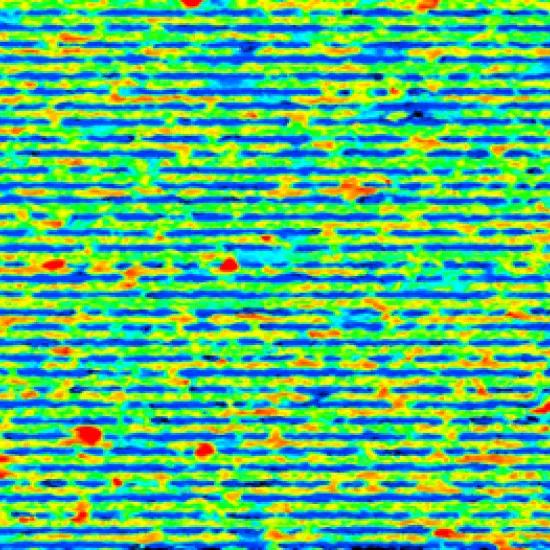Replacing classical methods significantly reduces environmental impact
Innovation in manufacturing plays a key role in reducing the industry’s environmental impact. Recent advances in non-classical manufacturing technologies, such as ultrashort pulsed laser manufacturing, open doors to new opportunities, reconciling cost considerations and environmental impact. Sirris has acquired the know-how and infrastructure to create with this laser technology novel surface textures, that often surpass the performance of classical coatings. Check out our comparative overview!
Circularity and energy efficiency are key drivers for future product development. In order to achieve the objectives of the European Commission with regard to critical raw materials and the decrease in greenhouse gas emissions (FitFor55 package), companies have to increase their innovation pace in these fields. Often, these actions go hand in hand: using less raw materials or materials that require energy intensive refining leads to lower carbon footprints of the product itself, especially if the use phase of the product is not dominating.
Manufacturing plays a key role in this process. Often, there are multiple ways to create a product, in which, in a classical approach, cost has been the determining factor. While this is still the case, each year, energy efficiency and material use become more dominant factors in considerations that determine the choice of manufacturing technology. In addition, recent advances in novel, non-classical manufacturing technologies open up doors to new ways to make things that reconcile cost considerations and environmental impact.
Ultrashort pulsed laser manufacturing
One of these novel technologies is ultrashort pulsed laser manufacturing. It can be used to create functional surfaces on metallic, ceramic and polymer parts, either directly or indirectly, with technologies such as injection moulding, roll-to-roll processes or embossing. Think of surface functionalities such as easy-to-clean, lower or higher friction coefficients, optical and thermal effects. These functionalities are key in many machines, vehicles and consumer products, and determine their value and usability. Currently, they are mainly achieved with coating processes or energy intensive grinding.
Sirris has the know-how in and the necessary infrastructure to create exciting novel surface textures, which often surpass the performance of classical coatings. In the image above an example is shown of water bouncing off and taking away dust or contaminants from an aluminium surface. The texture used can also be applied in other materials, such as steel, copper, nickel or glass and offer unprecedented opportunities. The high pace of advancements in the laser technology also allows this to occur at competitive cost in a mass production environment. We have seen an order of magnitude increase in laser powers and processing speeds in the span of just five years. Sirris can develop and demonstrate these functionalities for you, and help you to upscale the technology.
Laser texturing vs. classical processes
Since the beginning of 2024, Sirris is leading a “Belgium Builds Back Circular project”, in which we want to leverage these textures, in order to decrease the CO2 footprint of advanced components and reduce raw material use. This in a way that does not pose a threat to human health or the natural environment. The laser technology we have in-house is ideal to be applied for this. Many surface functionalities are currently made with energy-intensive processes (CVD, PVD, cladding, hard-chrome plating, griding, …). We intend to replace these classical, energy-and resource-intensive processes with a low-energy laser process that uses no consumables and provides the same to superior surface functionality. For this reason, in the BBBC project we will demonstrate antibacterial, low-friction and anti-icing surface functionalities, in order to replace existing coating solutions at least partially.
Our calculations on several typical industrial components have shown that replacing classical methods such as grinding, PVD coating and hard-chrome plating with laser texturing can significantly reduce the environmental impact. The results of these calculations are shown in the table below and are for three different (actual) industrial parts, in which friction coefficient is the main functionality.
| Part 1 | Energy use [Wh] | CO2 emissions [gr CO2] | Resource use [gr] | |
| Hard-chrome plating | 450 | 207 | 3 | |
| Laser texturing | 27 | 12 | 0 | |
| Delta [%] | 94 | 94 | 100 | |
| Part 2 | Energy use [Wh] | CO2 emissions [gr CO2] | Resource use [gr] | |
| Grinding | 41 | 19 | 4 | |
| Laser texturing | 9 | 4 | 0 | |
| Delta [%] | 78 | 78 | 100 | |
| Part 3 | Energy use [Wh] | CO2 emissions [gr CO2] | Resource use [gr] | |
| PVD coating | 3220 | 1481 | 4 | |
| Laser texturing | 166 | 76 | 0 | |
| Delta [%] | 95 | 95 | 100 |
The conclusion of these calculations is that the manufacturing process of choice, in this case to create a functional surface, can play a huge role in determining the energy use and circularity of a product. It is therefore not far-fetched to say that manufacturing as a discipline will play a huge role in future endeavours to create a more sustainable world, in which we are mindful of CO2 emissions and frugal with natural resources and the environment.
Would you like to know more about this topic? Do not hesitate to contact us!
This article was published as part of the BBBC project, with support of the Belgian FPS Economy.





